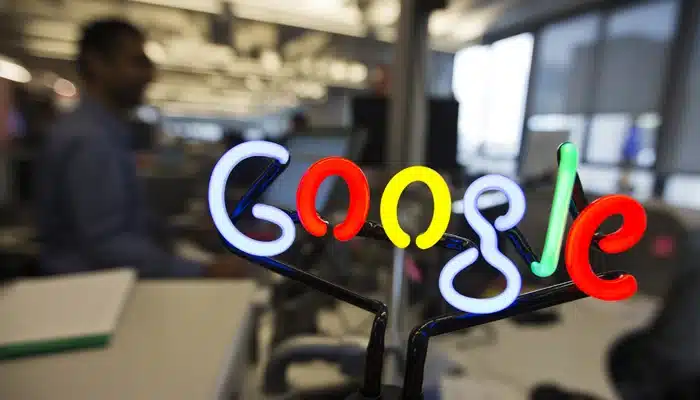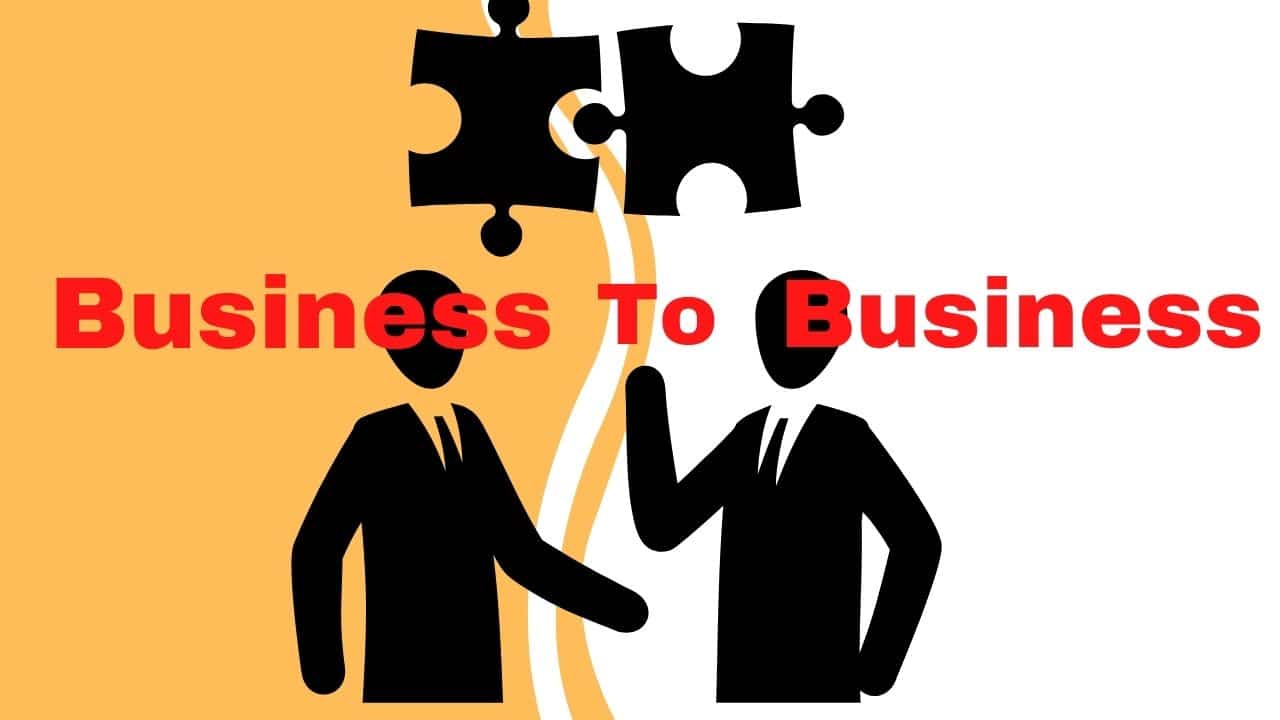What is the first thing that comes to mind when you think of Google?
Most people probably think of the all-encompassing Google.com. This makes sense given that Google processes 2.3 million search queries every minute and is, therefore, the most frequently visited website in the world.
Google, however, has evolved into something much larger than a simple search engine. It is now one of the most powerful companies in the world, owning a wide range of other businesses, including YouTube, Android, and Google Maps. But there’s more.
So, this article will discuss some of the most important companies that Google owns. It will also explain how Google’s ownership of these companies has impacted the tech industry and the world as a whole.
What Google Owns
Adsense
Adsense serves as Google’s web vendor for non-Google websites. Companies that want to display Google ads on their websites pay a fee in exchange for images, text, videos, and interactive media from Google. Adsense is a property of Google Network Members. It has contributed nearly 25% of Google’s revenue in recent years.
- 2016 revenue of $15.6 billion
- 2017 revenue of $17.59 billion
Android
Larry Page discovered the Android platform in 2005. Despite its difficulties, he saw the OS’s potential. Google quietly purchased Android for $50 million, and the operating system now dominates the global smartphone market.
Android controls over 85% of the smartphone market, leaving Apple with a (not-so-impressive) 11% share.
DoubleClick
DoubleClick provides online publishers with advertising services. It generates revenue by targeting customers and directing their attention to specific advertiser pages.
DoubleClick can also provide publishers with online traffic reports that show the length of each visitor’s session on their site, page by page. Google purchased DoubleClick in March 2008, and the company generated over $30.6 billion in revenue in 2017.
Chrome
Google Chrome, a free internet browser, was released in 2008, and over 2 billion installs have been reported since then. Chrome accounts for over half of all mobile and internet browser usage.
Google Drive
Google Drive is a top-rated cloud storage app, with over 800 million users registered in 2017.
Users of Google Drive can:
- Store files securely
- Files can be accessed from any location.
- Make offline file viewing possible.
- Use Google Photos to access videos and photos.
- Share folders and files with ease.
Google Maps
Google Maps is a free app with a user base of over 1 billion people. It is said to be the preferred navigation app for nearly 80% of Android phone users and nearly 70% of iPhone users.
Users can use Google Maps to find any location on the planet. Businesses can pay to have their logos displayed directly on the app. This ensures that potential customers can easily find these businesses.
Play Store
Google Play debuted in 2012. Play Store is the official app store for Android OS. Google and Android have consolidated all of their games, music, apps, books, and movies into one location, providing Google Play users access to over 40 million songs and 1.5 million apps.
The Play Store offers a diverse range of entertainment options. Some apps are free to download, while others have a one-time fee.
YouTube
Google paid $1.6 billion for YouTube in 2006. After Google (number one) and Facebook (number two), YouTube is the world’s third most visited website, according to Omnicore, an ad tracking agency. YouTube is the most popular video hosting service on the internet.
Every day, 5 billion videos are viewed on YouTube, with each user spending an average of 40 minutes per video-streaming session.
YouTube TV was launched in 2017. This subscription service is only available in a few markets and costs $35 monthly. YouTube TV has approximately 300,000 paid subscribers. Sponsored content and video advertising generate revenue for YouTube. YouTube earned $9 billion in advertising revenue in 2017.
Other Companies
Most of the revenue these Google-owned companies generate comes from service fees, hardware, in-app purchases, app sales, licensing fees, digital content products, and advertising. Since its “BackRub” days, Google has come a long way. Google and Alphabet, Inc. have a combined market capitalization of $650 billion, making the dynamic duo a no-brainer stock for investors.
Let’s take a look at the remaining other businesses…
Google Fiber
Fiber, which launched in Kansas City in 2012 and has since expanded to more than 15 other cities, forayed into the cable company world. Fiber provides television, phone service, and, of course, extremely fast internet service.
Surprisingly, some sources claim that Google’s founders have lost interest in Fiber and are winding down the company. They have even pulled their services from Louisville, Kentucky, indicating that this is a new Google company that may follow in the footsteps of Google +.
Nest
You may have a Nest thermostat in your home, but I’m sure you’re unaware that the company was purchased by Google in 2014. Nest began as a sensor-driven, WiFi-enabled learning thermostat device (the device adapts based on your preferences) that you could program from your smartphone.
Nest now sells security cameras, as well as smoke and carbon dioxide detectors. Google paid $3.2 billion for Nest, a wise investment in this smart device.
Looker
You may not have heard of Looker unless you work in the business intelligence software or data analytics fields. Google believes it is a major player in the software industry and has acquired the company. Looker’s software alters programming queries to read more like natural languages (such as English). In February 2020, Google paid $2.6 billion for Looker.
Waze
Waze, a crowd-sourced navigation app, was purchased by Google in 2013. Google Maps was already seven years old at the time. Google saw Waze as a way to eliminate competition, and they recognized the value in the app’s traffic-updating features. Waze reached nearly 100 million monthly active users in 2018 – another wise investment. Google paid $966 million for Waze.
Pointy
With the acquisition of Pointy, Google forayed further into the hardware world. The Pointy tech product assists business owners in selling more items online and in-store. After purchasing a Pointy box, the user scans it with their barcode scanner, which generates a Pointy page for the product. This improves their store’s visibility on search engines like Google. Google paid $163 million for Pointy in 2020 and assists brick-and-mortar store owners in establishing their presence with this technology.
AppSheet
If you’re not a software expert, you’ve probably never heard of AppSheet, a pioneer in the no-code software movement. Google bought AppSheet for one important reason: to use its software with Google Cloud. Google Cloud is attempting to change the application development space so that it is less reliant on complex coding, and AppSheet is assisting in that effort. The price Google paid for AppSheet in early 2020 was not disclosed, indicating that this was a no-code acquisition and a no-details shared purchase.
Fitbit
In a massive investment move in 2019, Google paid $2.1 billion for the fitness giant Fitbit. Fitbit was a hugely successful company, and it makes sense that Google, which has invested heavily in wearable technology (such as Google Glass), would want to take over Fitbit. There has been talk about Google harvesting Fitbit wearers’ data to build more accurate profiles for advertising purposes. On the other hand, Google has denied acquiring Fitbit for this reason. The tech world is undeniably looking to expand into healthcare, and Google is doing just that with its Fitbit acquisition.
Socratic
Socratic is a homework assistance app that Google acquired in 2018. The app includes a feature that allows users (students) to photograph a problem and receive an instant explanation. This is most useful in math, but Socratic also offers homework assistance in science, literature, social studies, and other subjects. Google also did not disclose the cost of this acquisition, but it was a wise move into the education space. With the help of Google, the app now uses AI technology to assist users.
Elastifile
Google has been expanding its cloud services, and the acquisition of Elastifile in 2019 aided this effort. Elastifile offers scalable enterprise file storage for the cloud. Because many people now work from home and rely on cloud solutions to access their work files, cloud storage has become even more important in 2019 than Google could have predicted. Google did not disclose the financial terms of its acquisition of Elastifile.
Alooma
In 2019, Google made another move into the cloud world by acquiring Alooma. Alooma is a data migration industry pioneer. The company assists enterprise companies in streamlining database migration to the cloud.
Alooma employs a cutting-edge data pipeline tool to move data from multiple sources into a single data warehouse. That’s pretty efficient and definitely valuable, which is precisely what Google likes. Alooma assists Google Cloud in providing its services to customers more efficiently. Again, Google did not disclose the exact cost of acquiring Alooma.
LaunchKit
Launchkit is a company that creates a mobile app development toolkit. The company’s goal was to make developing mobile apps easier, including several tools such as Screenshot Builder, App Website Builder, Review Monitor, and Sales Reporter—the purchase aimed to spur innovation and tools for Android app developers. The financial terms of Google’s acquisition of Launchkit were also not disclosed.
Verily
When Google bought Lift Labs in 2014, it also bought the company’s divisions, including the research organization Verily Life Sciences. The company develops solutions integrating hardware, software, medicine, and professional care. They are dedicated to assisting people with diabetes in managing their condition. Verily has previously worked on various products, but according to some sources, they are currently combating coronavirus.
GV
GV, originally Google Ventures, is an Alphabet division that invests in early-stage start-ups. They’ve put money into Uber, Lime, and Slack. Keep an eye on GV’s investments if you’re interested in cutting-edge technology.
DeepMind
DeepMind, which focuses on artificial intelligence research, was acquired by Google in 2014. It has collaborated with Google on existing products such as search. Fun fact: DeepMind AI can teach itself to play arcade and board games against humans – now that’s a game I’m already betting on!
Waymo
Waymo is Google’s self-driving car project, which grew out of X, a Google-owned R&D company. It became its own company in December 2016. Waymo and Lyft have collaborated on a self-driving service in the Phoenix area. Waymo has been working in the self-driving world for a long time, and its ultimate profitability remains to be seen.
Project Wing
Project Wing is yet another company that arose from Google’s R&D division, X. This is a drone delivery service, so if it becomes available in your area, Project Wing can bring you wings! According to sources, the company imposes harsh working conditions, and the project manager, Dave Vos, left in 2016. It’s debatable whether drone delivery is the way of the future – get it? However, it has the potential to solve some unusual problems!
Pixel
Google Pixel is the company’s first foray into the smartphone market. The Pixel phone was released in 2016 and was marketed to regular people. Pixel offers a product line that extends beyond smartphones (primarily laptops) and positions itself as a viable alternative in a market dominated by Samsung and Apple.
Calico
The California Life Company is abbreviated as Calico. This company, founded in 2013, is primarily concerned with combating aging-related diseases and has even been said to have the mission of “curing death.” Google’s acquisition of Calico aided in the company’s establishment in the market.
The medical world.
Sidewalk Lab
Google also owns Sidewalk Labs, a company dedicated to improving urban living by addressing energy consumption, transportation, and pollution issues. The company creates neighborhoods and new products – it sounds like it’s right up Alphabet Alley!
Google And Alphabet Companies
CapitalG
CapitalG is an Alphabet-owned private equity fund. It takes a different approach than Google’s start-up fund, GV. CapitalG is more interested in established, fully-scaled businesses than promising new ventures. This Google division only invests in companies that have a proven track record, market fit, and fully developed products. CapitalG has invested over $3 billion in projects like CrowdStrike, Lyft, and UiPath. Keep an eye on the CapitalG portfolio if you want to find well-established companies that are promising investments.
Intrinsic
Intrinsic Robotics is a robotics company dedicated to revolutionizing industrial robotics options. It began as an X Labs project addressing accessibility issues associated with industrial robots. X Labs recognized that while robotic technology has the potential to transform the modern industry, these tools also have a steep learning curve. Robotics experts can spend hundreds of hours programming their robots to perform simple tasks, and people without this knowledge were effectively barred from using this technology. Intrinsic is committed to making industrial robots more helpful to businesses and entrepreneurs worldwide.
Glass Enterprise Edition
Google has experimented with several versions of Glass, smart glasses that serve as wearable computers. The most recent evolution of this concept is Glass Enterprise Edition. The current business model is aimed at industries where people must access information while working with their hands. Mechanics, doctors, factory workers, skilled tradespeople, and many other workers must now look away from their work to check computer screens or tablets. Glass Enterprise Edition is working on wearable smart glasses that will allow professionals to check data without having to look up from their work.
Malta
Malta is another X Labs project that provides electro-thermal energy storage solutions. It began as an effort to make alternative energy more effective over time. When conditions are favorable, solar and wind energy plants generate plenty of energy, but supply and demand become out of sync. On sunny days, a solar plant may have excess power wasted because it cannot be used. On still, windless days, a wind energy plant may not be able to supply enough power to its community. Using grid-scale technology, Malta developed tools for storing excess energy. These tools aid energy conservation and make power grids more predictable and reliable.
AdMob
AdMob is a digital advertising firm that specializes in mobile, app-based ads. You’ve probably seen an AdMob product without even knowing it if you’ve ever seen a banner, video, pop-up, or another type of ad while using an app. AdMob prioritizes making its product simple and straightforward for app developers and users. This company’s services are used by apps worldwide, including some of the most popular. According to Google, AdMob is used by over 100 million advertisers and 100 million app developers.
Dandelion
Dandelion Energy is an energy company that uses residential geothermal installations to reduce carbon emissions and heating costs. It recognized as an X Lab project that geothermal heating and cooling systems were typically too expensive for residential installations.
The project’s goal was to develop an affordable, accessible geothermal system that could be installed in homes all over the world. Dandelion Energy’s home geothermal tools provide heating and cooling for homes by utilizing a heat pump and underground pipes. This system moves heat from the ground into homes during the winter and then back into the ground during the summer. Homeowners who install a Dandelion Energy system can replace their traditional heating and cooling systems with this modern, energy-efficient alternative.
Conclusion
There’s no denying it: Google is everywhere, which is often a good thing. The company is extremely profitable, and referring to it solely as an advertising company (despite the fact that this is where most of its revenue comes from) is highly misleading. Google is interested in everything, whether it’s hardware or software, healthcare or transportation.
Related Articles
- LUXURY WATCHES FOR WOMEN: TOP 10 EXPENSIVE WATCHES
- HOW DOES YOUTUBE MAKE MONEY IN 2023?
- How to Create a YouTube Channel & Make Money in 2023
- Best Buy Cyber Monday: Top 20 Cyber Monday Best Buy Deals
- DIGITAL MARKETING CAMPAIGN: Examples & Templates To Scale Any Business






